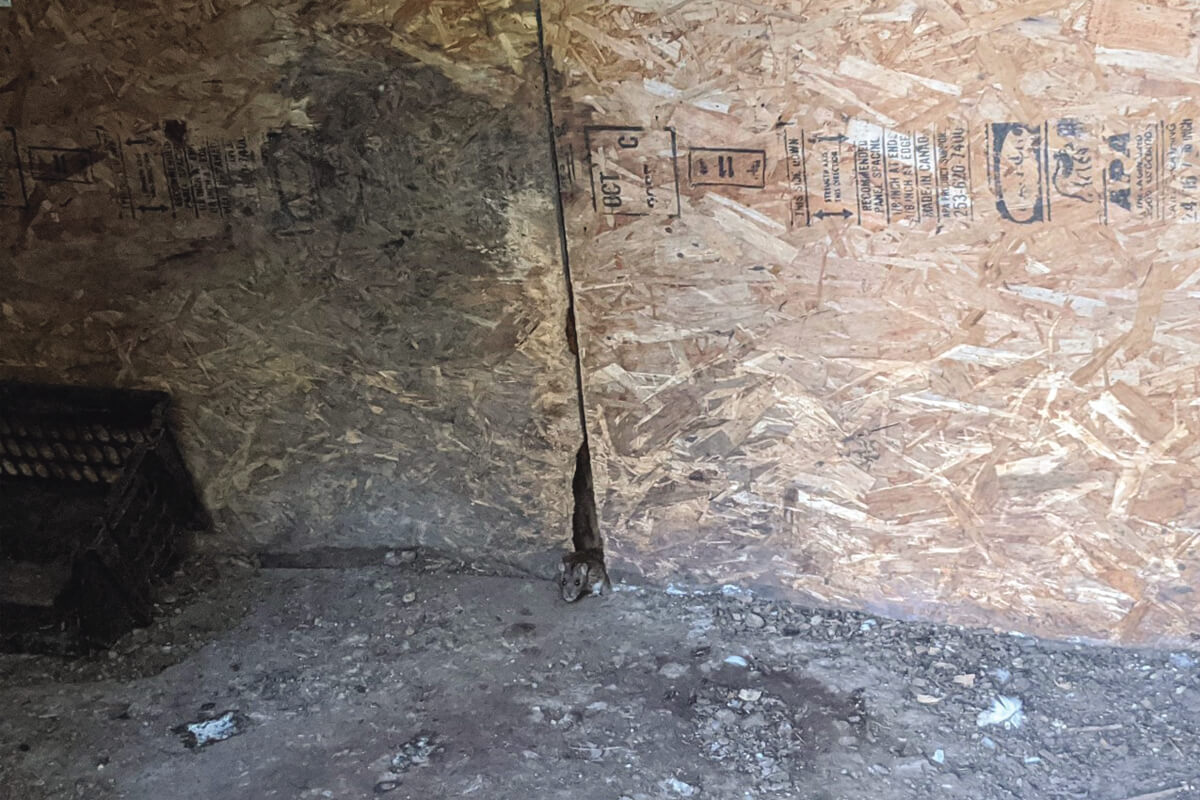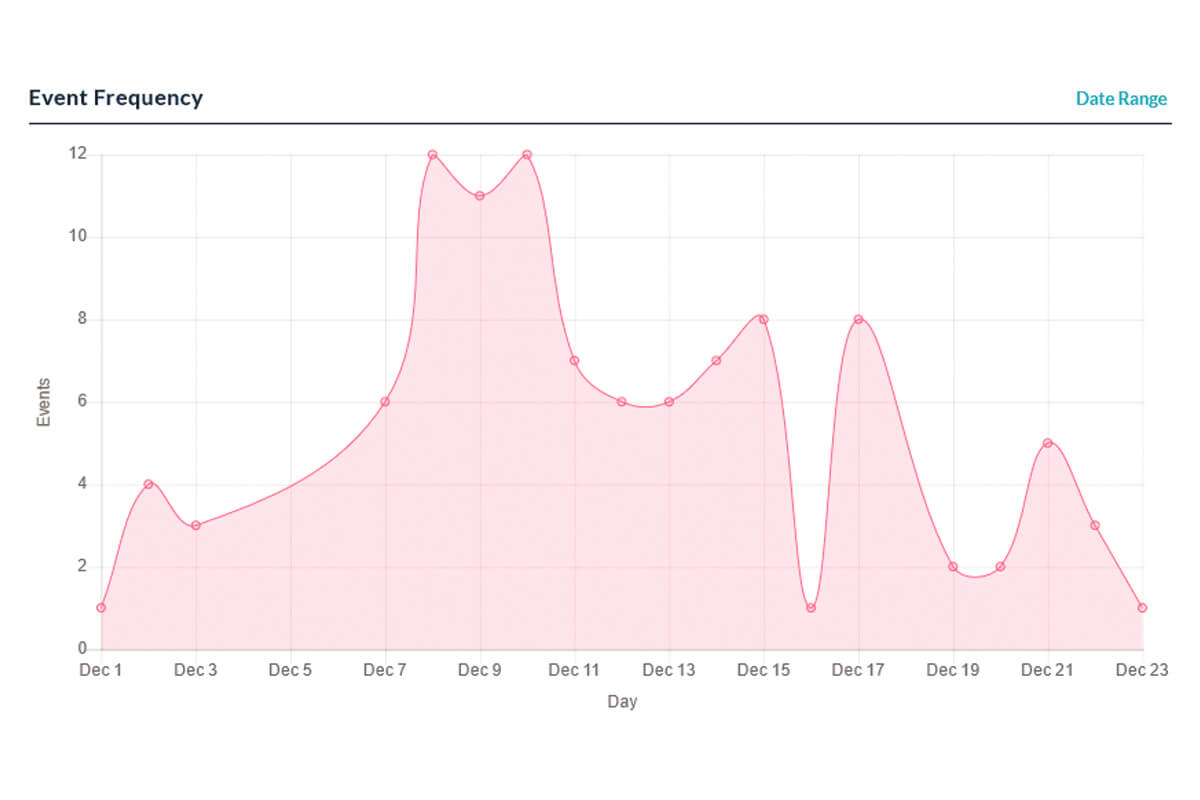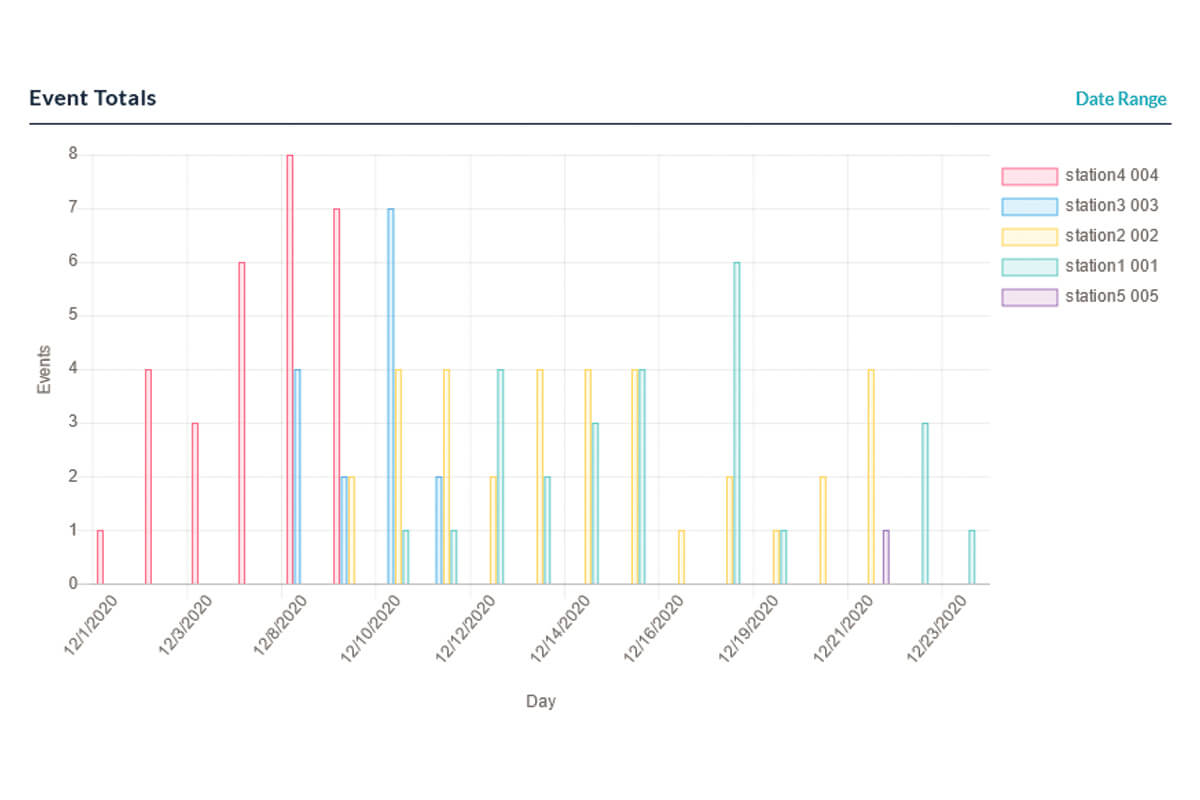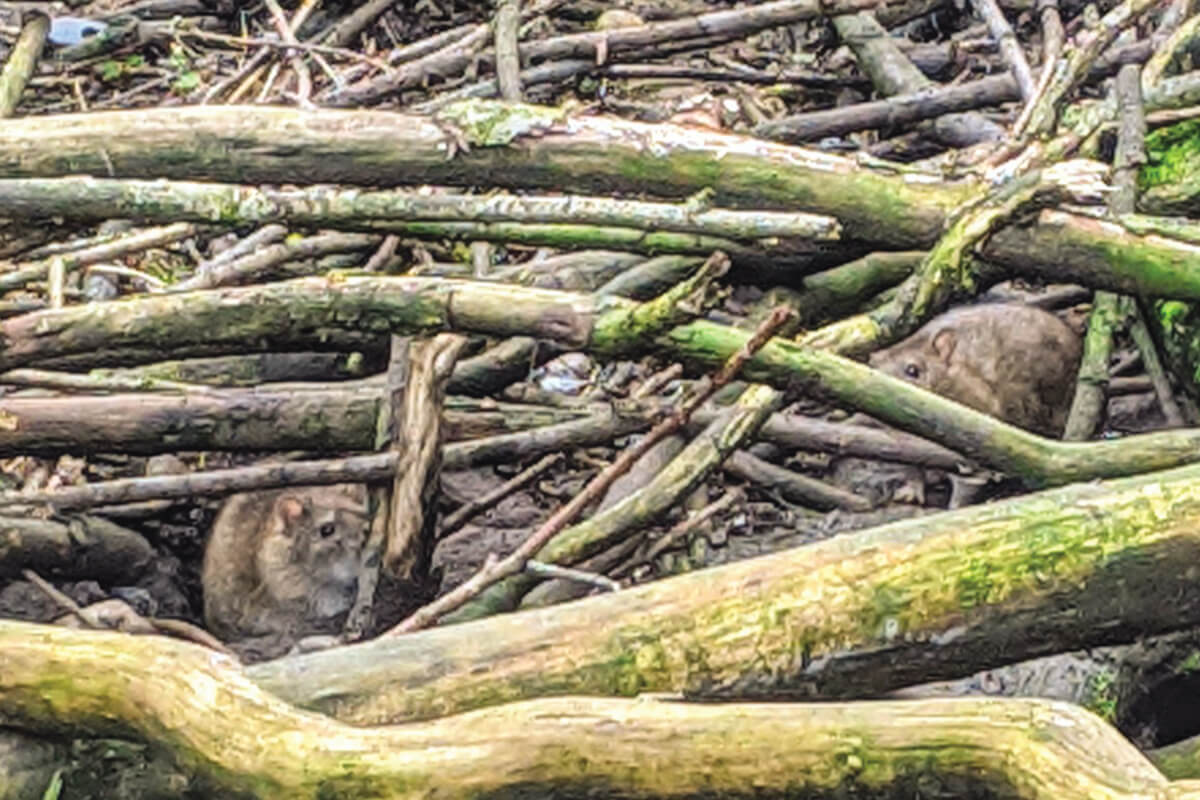By: Chris Somers, A.C.E. and Service Manager at Rambo Total Pest Control
This article is part of a series on Rambo’s Remote Rodent Monitoring Program.
Part 1: Challenges and Opportunities
Part 2: Remote Sensing Technology
Part 3: Initial Results
Part 4: Norway Rat Test Sites
The rodent control services you see as a homeowner—and the services we perform as Pest Management Professionals—are going to change dramatically within the next few years. Not because we all want it to change, but because of legislation and special interest groups.
Let’s discuss rodents, the reason why these changes are occurring, and what Rambo Total Pest Control is doing to prepare for the coming changes to rodent control services.

Rat emerging from a wall void in shed. Photo taken by Chris Somers, A.C.E. 2020
Why Does Rodent Control Need to Change?
I’ll start with a little background on why this is so important. There are three commensal rodents (commensal is defined as “to share one’s table”) that live off of humans without returning anything of worth: Norway rats (Rattus novegicus), roof rats (Rattus rattus) and house mice (Mus musculus).
Commensal rodents contaminate our food, water, and even the air we breathe. They’re vectors of disease, carrying parasites, bacteria, and viruses. They damage our homes and automobiles, and can even create fires when they gnaw through electrical wires. They carry ectoparasites like fleas, ticks, and mites that can also transmit pathogens.
Rats and mice are drawn to our homes, businesses, and resources, constantly competing with us for them—and quite successfully, I might add.
The pest control industry has been acting to protect human health and safety by reducing these pest populations. It’s a huge effort, year after year. And despite those efforts, the populations keep booming. The reality is that rodent populations are on the rise globally. Population density, aging structures, aging infrastructure, rises in homelessness, sanitation, and climate change are just a few of the driving forces behind increasing rodent populations.
Using Rodenticides in Rodent Control
Many residential homes and businesses have taken on pest control services to help control rodent populations, and almost every one of these locations has bait stations around them.
What’s inside of these stations? More often than not, a rodenticide—and most commonly, that rodenticide is a second-generation anticoagulant rodenticide (SGAR).
SGARs have a lot of upsides:
- They’re diverse, with many different kinds of formulations and application methods.
- They’re cost-effective, which helps keep prices reasonable for clients.
- They have an antidote, unlike some other rodenticides.
Honestly, they check a lot of the boxes in what you would want in a rodent control material.
The current argument against them is that non-target organisms—especially predatory animals—have been showing signs that there is secondary exposure occurring. Rat eats rodenticide, coyote eats rat; once the coyote eats enough rats, the rodenticide builds up in its system, causing secondary exposure.
Currently, there is scientific research exploring the actual impact to the ecosystem. But the researchers that are conducting these studies still say we’re a few years out from having the kind of data needed to truly assess the extent of it. And (sorry to say) there are pretty limited studies being appropriately funded on that front. However, decisions are being made before all the facts are actually in.
The Rodenticide Ban in California
California recently passed a law that put a moratorium on SGARs. This essentially makes it so that residential and commercial pest control companies—as well as the general consumer—can no longer use any of those rodenticides to control rats and mice at people’s homes or places of business. Since SGARs are by far the most widely used rodenticides, that has created a substantial issue. And not a lot of time to react by putting backup plans into effect.
Regardless, California has removed a valuable tool for rodent control. Washington is among a few states now assessing—and potentially removing—SGARs through legislation. If you’ve been battling rodents, like so many others in our communities, you can see why this could have a substantial impact on all of us.
Remote Sensing Technology for Rodent Control
That said, it’s not all doom and gloom here! Over the years, new technology keeps coming out; happy to say that it definitely applies to pest management as well! One of the newest technological advancements for rodent management is referred to as remote sensing technology.
Put simply, it’s the equipment we can use to track rodent activity, population levels, and how they interact with our exterior control measures. We then use that data to analyze trends and establish control measures with a data-driven approach.

The graph above displaying the trend in rodent activity detected in a single rodent station over a 24 day period. Analyzing the trends over multiple months helps us determine the treatment method we want to deploy and how effective those control measures are. Trends and methods will be reviewed and discussed with more detail in upcoming posts.
I have to be honest, this is very exciting for us!
Rambo’s Remote Rodent Monitoring Program
Rambo Total Pest Control has begun to implement this technology at 24 carefully selected accounts; we’re currently running a 12-month test program. Luckily enough, I’ve received the honor of overseeing it with our two lead technicians, Jonathan Jefferson (JJ) and Robert Leslie (Butch), who are leading the charge in-field application.

The graph above showing the amount of activity detected in all deployed rodent stations on site. This helps us get an overview on when/how stations are approached and interacted with. Over time we can determine a lot about the active rodent population with reports like this. This will be explored in more detail on upcoming posts.
Our aim is to gain insight into rodent’s interactions with our equipment and materials on site. How long does it take for rodents to start exploring our stations? How often do stations get entered? How long before they start feeding on the bait, and what are the rodent’s preferences in bait at different locations?
That’s just for starters. Ultimately, we’ll explore how we use the data to customize control measures at these locations. And in another interesting twist, we’re aiming to do this while using less rodenticides—and no SGARs. This is in preparation as similar bans on rodenticides make their way to Washington State.
Over the next 12 months, we will be periodically releasing our results: what’s working well, and what is not. By utilizing new technology and testing different strategies, we can add more concrete data to the conversation.
In this way, Rambo Total Pest Control is aiming to be very well-prepared for the coming changes, and we are looking to maintain our clients’ faith during a potentially difficult transition. We’re also looking to support our fellow Pest Management Professionals in successfully implementing new tactics when the time arrives. It’s a considerable investment on our part, but we don’t shy away from an opportunity to have a positive impact!

Rats venturing out of their burrows. Photo taken by Chris Somers, A.C.E. 2020
Being Proactive to Keep You Safe
Without proper control tactics, commensal rodent populations can rise steeply. And the threat to human health, safety, property, and critical resources will rise with it. Without successful programs, our clients and fellow Pest Management Professionals will be put in tough situations, to say the least. So, we’re looking forward to doing our part to proactively get ahead of these challenges.
Please join us for all of our future updates and content. We’ll be implementing this at accounts that vary in what kind of rodents we are targeting, and we’ll cover the three commensal rodents, as well as deer mice. It’ll be great information for pest control clients and Pest Management Professionals alike, so stay tuned!
